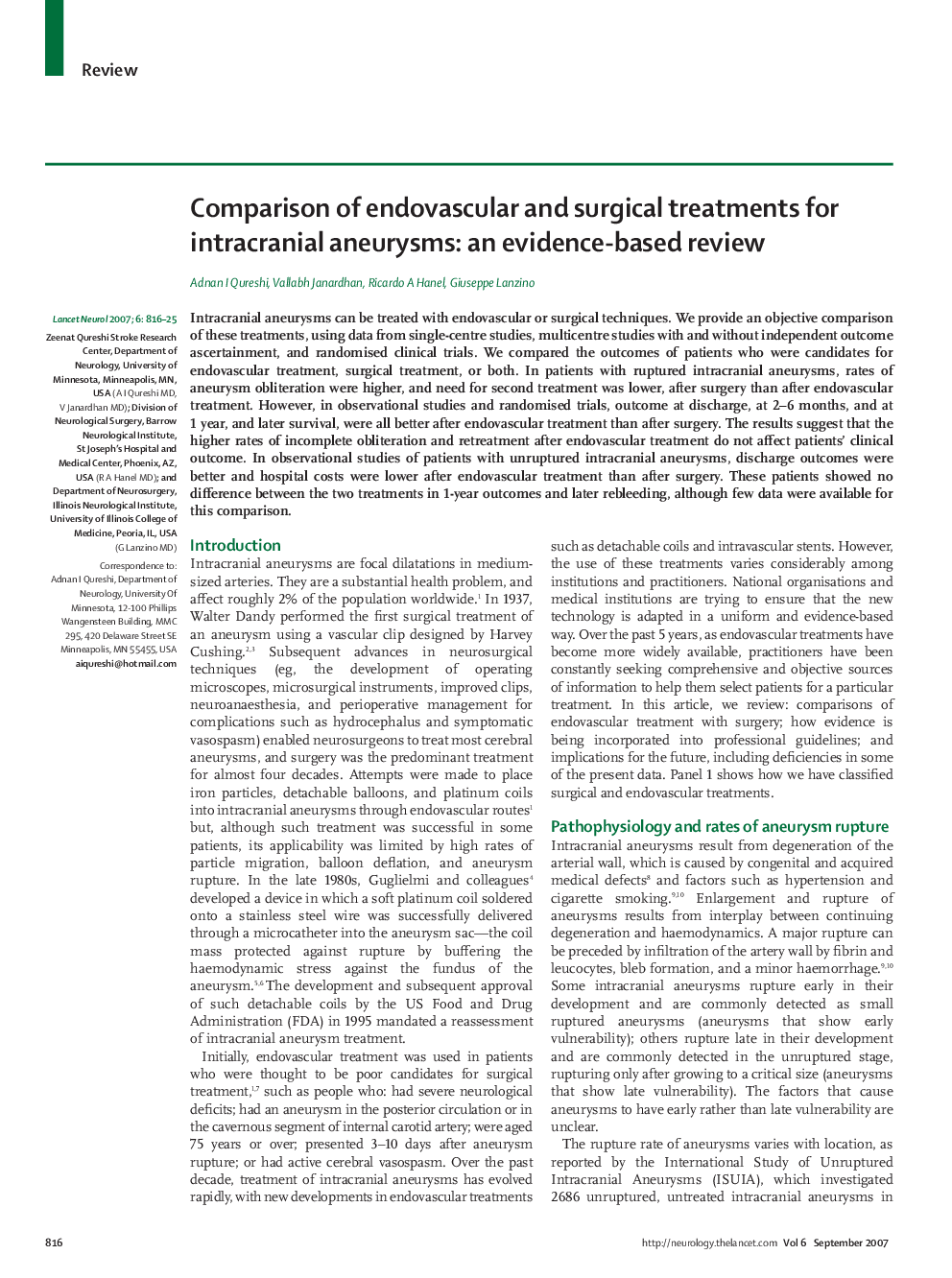| Article ID | Journal | Published Year | Pages | File Type |
|---|---|---|---|---|
| 3067658 | The Lancet Neurology | 2007 | 10 Pages |
SummaryIntracranial aneurysms can be treated with endovascular or surgical techniques. We provide an objective comparison of these treatments, using data from single-centre studies, multicentre studies with and without independent outcome ascertainment, and randomised clinical trials. We compared the outcomes of patients who were candidates for endovascular treatment, surgical treatment, or both. In patients with ruptured intracranial aneurysms, rates of aneurysm obliteration were higher, and need for second treatment was lower, after surgery than after endovascular treatment. However, in observational studies and randomised trials, outcome at discharge, at 2–6 months, and at 1 year, and later survival, were all better after endovascular treatment than after surgery. The results suggest that the higher rates of incomplete obliteration and retreatment after endovascular treatment do not affect patients' clinical outcome. In observational studies of patients with unruptured intracranial aneurysms, discharge outcomes were better and hospital costs were lower after endovascular treatment than after surgery. These patients showed no difference between the two treatments in 1-year outcomes and later rebleeding, although few data were available for this comparison.
